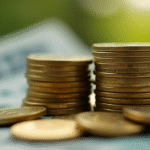Introduction to the Economic Context
In the second quarter of 2025, the domestic demand played a crucial role in reviving the GDP growth. This recovery was primarily driven by private consumption and fixed investment, which bounced back after two consecutive quarters of decline. Meanwhile, government spending also experienced an upward trend over two periods.
Key Economic Indicators
Private Consumption
Private consumption, a significant component of domestic demand, showed signs of recovery. Households increased their spending on durable goods, such as automobiles and home appliances, which contributed to the growth in retail sales.
- Durable goods spending up by 3.5% compared to the previous quarter
- Increased consumer confidence led to higher discretionary spending
Fixed Investment
Fixed investment, another essential aspect of domestic demand, also demonstrated growth. Businesses expanded their capital expenditures in areas like machinery, equipment, and construction projects.
- Capital expenditure growth of 4.2% compared to Q1 2025
- Increased business confidence and expectations of future economic growth
Government Spending
Government spending continued its upward trajectory, with both consumption and investment components contributing to the overall growth.
- Government consumption expenditure up by 2.8% compared to Q1 2025
- Government investment in infrastructure and public services increased by 3.1%
External Demand’s Role
Despite the robust domestic demand, external factors continued to play a significant role in driving the economy. However, on a semi-annual basis, external demand remained the primary engine of growth, albeit with a weaker performance compared to 2024.
- Export growth of 1.9% compared to Q2 2024
- Import growth of 2.5% compared to Q2 2024
Impact on the Economy
The recovery in domestic demand led to a 3.1% GDP growth rate in Q2 2025, which was a notable improvement from the previous quarters. However, the economy still lagged behind its performance in 2024 due to the weaker external demand.
Key Questions and Answers
- What is domestic demand? Domestic demand refers to the total spending on final goods and services within a country’s borders, encompassing private consumption, fixed investment, and government spending.
- Why is private consumption important for GDP growth? Private consumption accounts for a substantial portion of the overall economic activity. When households increase their spending on goods and services, it directly contributes to the GDP growth.
- What role does fixed investment play in the economy? Fixed investment, or capital expenditure, represents businesses’ investments in machinery, equipment, and construction projects. These investments are crucial for long-term economic growth as they enhance productivity and create jobs.
- How does government spending impact the economy? Government consumption and investment contribute to aggregate demand, which in turn affects overall economic growth. Increased government spending can lead to higher employment and income levels.
- Why is external demand important for the economy? External demand, driven by exports and imports, influences a country’s competitiveness in the global market. Strong external demand can lead to increased production, employment, and overall economic growth.






